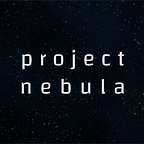Designing a Space-themed Collectible Strategy Game
The development of Project Nebula started off from just a few basic concepts of gaming that we have grown to love.
With Project Nebula we wanted to create a game that we ourselves would like to play but we also had the desire to do something that was not quite done yet before. We’ve always been drawn to the 4X strategy games and also spent countless hours and dollars on different collectible games. Project Nebula is bringing those two concepts together into a single game.
Making decisions about how the game should play out or how it should look has not been always easy because of the differences at the heart of those two concepts.
Most collectible games seem to center around a very simple core mechanic which is usually some form of PvP where the player is trying to overpower their opponents in direct conflict (think Magic: the Gathering, Gods Unchained etc).
With Project Nebula we are planning a different approach. The collectibles in this game are not used to defeat your opponent in a face-to-face conflict, but rather they will be used as strategic pieces for advancing further in the game — players will have an economy to manage, a skill tree to climb and the whole universe to discover and search for new collectible planets.
After some months into the process we came up with a few guiding principles that would help us make game design decisions further in the process. We’ll share those three principles with you today.
Principle 1 : Space is beautiful and our game should not distort, block or ruin it in any way.
The main object in Project Nebula was always the planet. A planet with unique visuals and unique qualities and attributes which will have various effects on gameplay.
If you take a look at a planet with no background or a solid white background for example, it is not nearly as impressive as it is with a beautiful space background. This might seem like a small and obvious thing, but for us as game developers, it made us really reconsider our graphical representation of the central items in our game. Even to the point of reducing the size of the planets in order for them to have a bigger overall impact for the players’ experience.
We understood that a huge part of what makes a planet beautiful is the setting it is placed into and thus it became clear to us that not only the looks of the NFT tokens are important, but also the backgrounds they are placed into. We then decided that we will want to use unique backgrounds for each of the solar systems in the game. There’s going to be hunderds and thousands of solar systems in Project Nebula and none of them will look exactly the same.
Principle 2 : Our collectible items (planets) have to be the stars of the show.
In Project Nebula the players will be taking charge of a colony ship that jumped through the wormhole to a mysterious new galaxy. They will be exploring the new galaxy hex by hex, upgrade their planets by building structures to them, research new technologies and much more.
Even though there’s going to be a lot more depth to Project Nebula than just the planet tokens, we are determined to make the unique planets really stand out from everything else:
Each of the planets will belong to one of the five rarity classes — Common, Uncommon, Rare, Legendary and Mythic.
The rarity classes will firstly define the in-game power level of each planet, but on top of that, the rarer planets will also have a unique description and they can hold a special story element or even a unique soundtrack.
Principle 3 : We are not designing a collectible game and we are not designing a 4X space game.
We have experienced both the overly complicated space games and the too simplistic collectible games. We did not want to make a game that the players are unable to understand in a reasonable amount of time, which is a problem with many overly complex space-themed games (although there is of course an audience for those as well). We also did not want to design a game that would be a disappointment for all the true gamers around the world, which is sadly the case with many of the existing blockchain games.
This might have been our most complicated problem to solve — keeping Project Nebula simple enough for the “collector” to have fun with his/her tokens, while making the “gamer” log in again and again after playing the game for several years.
This principle eventually led us to abandon our initial idea of including dozens of base resources into the game. We opted for three fairly simple resources — Credits, Research points and Industry whose use and meaning should be fairly simple to understand to everyone. To avoid being too simplistic though, we added a whole bunch of special resources or special planetery attributes that will be interacting with the game along the way in various cool ways.
With this approach we managed to create a gameplay that starts off quite simply and logically (nobody needs to read our wiki page to get going in the game), but step by step more interactions and complexity will unravel in Project Nebula to keep the gamers thrilled.
Thanks for taking the time to read this! Follow us on Twitter.
Project Nebula will launch in Q1 2021.
Initial planet token presale will take place in September 2020.
Stay tuned and sign up for the launch here:
www.projectnebula.app
